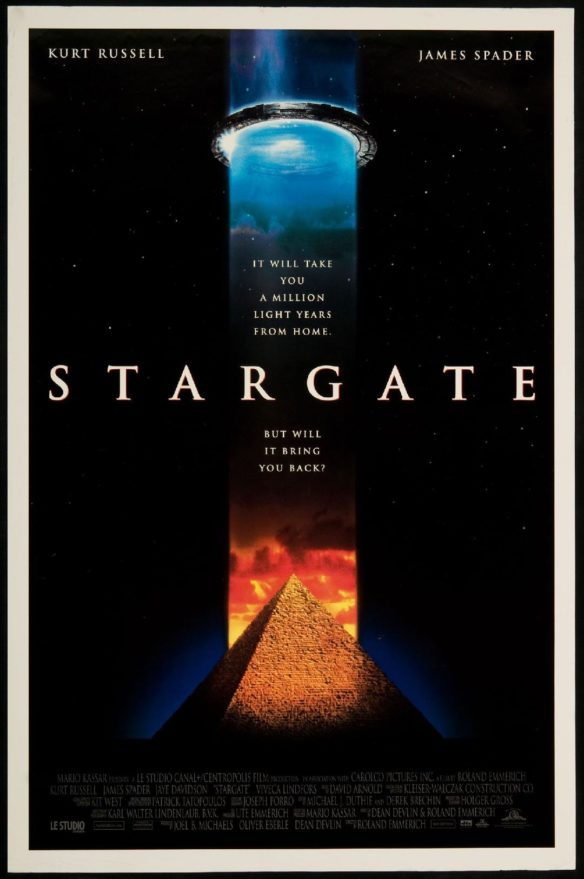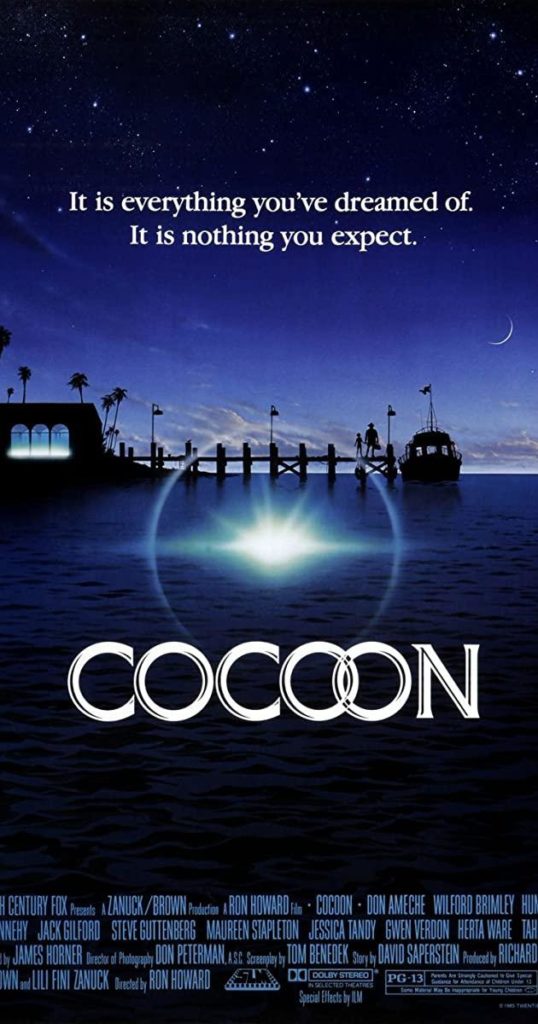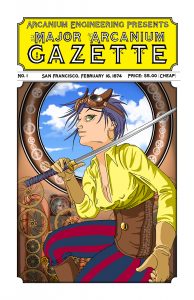(1) WE ARE THE CHAMPIONS. Exciting opportunity for those communicating about space to be recognized by the European Space Agency, with categories for video, artwork, storytelling, public speaking, and education. How many fans do we know who fall into these categories! “‘ESA Champions’ award initiative launched”. Check out the link for more info, and use #ESAchampion when sharing eligible projects on social media. Full details at the link.
Whether you are hosting a YouTube channel about space or volunteering to speak at your local school, we want to recognise and reward your passion and advocacy for space.
Our new ESA Champions initiative will honour outstanding contributions to communicating about space in Europe with unique awards and give you the chance to become part of an exclusive network of space enthusiasts, as well as win some awesome prizes.
We’ll be monitoring social media over the next few months for creative representations of your passion for space in Europe, in particular on Twitter, Instagram, Facebook, YouTube, LinkedIn and Pinterest.
If you’re an artist who paints or draws space-themed pieces, a writer who publishes short stories about space or a vlogger who posts videos, now is your chance to be recognised….
(2) DOCTOR WHO ACTORS IN THE SPOTLIGHT. Mandip Gil tells Radio Times what it feels like to be a companion on the way out.“Russell T Davies’ Doctor Who return is a ‘relief’ says star”.
…“When I started, I didn’t realise how significant it was taking over from other people, but now it’s happening to me,” she tells RT. “You’re not part of it, in that you don’t know what’s happening. Who are the companions? What are they going to do?
“I’m going to watch it, be nosey and think, ‘How’s it different to ours?’”…
But Jodie Whittaker confessed to Radio Times she was tempted not to go after all: “Jodie Whittaker considered going back on her Doctor Who exit plan”.
Speaking exclusively to Radio Times magazine, Whittaker said: “Chris [Chibnall] and I always said we were going to do three series together, but then when you get to it, it’s a very different thing.
“Sometimes it was like… ‘Are we sticking to this decision?’ There’s part of me that could absolutely say, ‘No, let’s keep going! Let’s go back on it!’ But to give the fans the level that they deserve, there has to be some sacrifice. You have to know when you’ve done it.”
Meanwhile their final season is about to air. Radio Times fished for possible surprises: “Doctor Who Thasmin in series 13 – do the Doctor and Yaz get together?”
…However, Gill also cautioned that fans don’t buy a hat for Yaz and the Doctor’s wedding just yet, noting that the duo’s closeness doesn’t necessarily mean they’d become involved romantically.
“At the same time, it could also head down the route of like it being platonic, because two people are allowed to travel together and not have that relationship,” she said.
“People have asked about it, people have wanted it. Me and Jodes have a lovely relationship as people, as actors, and our characters have a really, really nice relationship. And I think it’s been written very naturally.”…
(3) JMS FAQ. J. Michael Straczynski told Facebook readers today:
I’m getting a lot of nearly identical questions on various forums — here, Twitter, elsewhere — so to avoid redundancy, or repeating myself, or saying the same thing more than once in a way that doesn’t exactly sound like a repetition but serves the same purpose, I’ve created a Frequently Asked Questions file to address the issue.
Here’s the link: “JMS POSTING FAQ” from J. Michael Straczynski on Patreon. A few examples:
17) WHAT IS THE NEW BABYLON 5 PILOT/STORY ABOUT? WHAT CHARACTERS ARE IN IT? WHERE IS IT SET? All of that is classified, I can’t publicly discuss any of it. So there’s no point in asking anything about the story for the new pilot, because I can’t tell you. But patrons here will be the first to get the details as they emerge, long before it reaches the rest of the world.
18) WHY DID YOU HAVE GWEN STACY AND NORMAN OSBORN HAVE KIDS? They were going to be Peter’s kids but Marvel thought Norman was a swell idea and would avoid making Peter seem old. I didn’t know any better. I was an idiot. Here, rub some salt in my wounds….
19) CAN I SUGGEST ACTORS FOR THE NEW SHOW? Technically yes (provided those suggestions don’t come with character names), but really, if you don’t know for sure who the characters are going to be, how can you suggest a suitable actor? Riddle me that, Batman!
(4) NEVER THE TWAIN SHALL MEET. Michael Dirda anoints Ambrose Bierce as “One of America’s Best” in The New York Review of Books.
Ambrose Bierce (1842–1913) is arguably the finest not-quite-first-rate writer in nineteenth-century American literature. Civil War veteran, contrarian journalist, master of the short story, muckraker, epigrammatist, and versifier, he is today most widely known for that word hoard of cynical definitions, The Devil’s Dictionary, and for a handful of shockingly cruel stories about the Civil War.
In those dozen or so “tales of soldiers,” gathered in the collection eventually titled In the Midst of Life (1892, augmented in 1898 and 1909), a brother shoots his brother, a sniper is compelled to kill his father, and a cannoneer obeys the order to destroy his own house, where his wife and child await his return from battle. The best known of these contes cruels, “An Occurrence at Owl Creek Bridge,” has been called—by Kurt Vonnegut, himself a kinder, gentler Bierce—the greatest short story in American literature. Surely, no first-time reader ever forgets the shock of its final sentences….
(5) SANDCASTLES IN THE AIR. John Scalzi registers his take on the epic film: “Dune: A Review” at Whatever.
…To bring Villeneuve himself back into it, it’s fair to say that he is a very fine match for the material. To begin, Villeneuve’s visual aesthetic, and its tendency to frame people as tiny elements in a much larger composition, is right at home with the Dune source material, in which legions of Fremen and Sardaukar and Harkonnens stab at each other, and 400-meter sandworms tunnel through the dunes of Arrakis. To continue, anyone who has seen Villeneuve’s filmography is well aware he is a very very very serious dude; there’s not a rom-com anywhere in his history. Dune’s single attempt at a joke is done and over in the first 20 minutes the film, almost before it even registers. One can argue whether or not Frank Herbert’s prose and story styling in Dune is exhaustingly and pretentiously serious or not, but it is what it is. Given what it is, it needs a director whose own style matches. That’s Villeneuve. I don’t care to see Villeneuve’s take on, say, Galaxy Quest. But Dune? Yup, that’s a match….
(6) 100% ACCURATE PREDICTION. Here’s Ursula Vernon’s reaction. Thread starts here. A few highlights:
HORROR THIS YEAR. Raquel S. Benedict, David Jesudason and Rich Johnson appeared on Connecticut NPR’s The Colin McEnroe Show where the host led a discussion about why horror, as a genre, is particularly resistant to Disneyfication and other topics covered were the current renaissance in Black horror cinema and An American Werewolf in London. “Not Necessarily The Nose: The year in horror, 2021”.
This year: Could it be that the one genre with a certain amount of immunity from the Disneyfication, the cinematic universeification of everything… is horror?
And: There’s an ongoing renaissance in Black horror dating back to Jordan Peele’s Get Out in 2017. This year’s best example is probably Nia DaCosta’s Candyman reboot/remake/sequel (co-written by DaCosta and Peele). But horror’s creeping (you see what I did there) reckoning with racism is having its share of ups and downs, too.
And finally: We have a largely arbitrary tradition of spending a chunk of this show on a horror classic that’s celebrating, specifically, its 40th anniversary. Previously, it’s been Halloween, Alien, The Shining. This year: An American Werewolf in London.
(8) AND AT THE NEXT TABLE. CrimeReads’ Molly Odintz convenes a symposium with horror writers, including Alma Katsu, Stephen Graham Jones, and Grady Hendrix. “Horror Fiction In The Age of Covid: A Roundtable Discussion”.
I came to horror the same way I came to Rihanna—later than most, but with the commensurate fiery passion of a true convert. Crime and horror have, after all, been slowly converging for many years, as domestic suspense transformed into the New Gothic, and psychological thrillers took over from procedurals as the dominant trend in the genre. And yet, despite my newfound fandom, I’m about as poorly informed a horror reader as one could be (I’ve only read one Stephen King novel and it was Mr Mercedes). So I invited a whole bunch of authors with horror novels out in 2021 to join me for a roundtable discussion on the genre and its appeal to crime fans, and in which I could stealthily attempt to figure what exactly horror is—and why we’re all enjoying it so much during the pandemic.
(9) COME AND GET MY COPPER. Atlas Obscura tells how the genre got its name, and contends they had a beneficial side-effect: “How Gruesome Penny Dreadfuls Got Victorian Children Reading”.
…As one might expect, no audience was drawn into the world of penny dreadfuls more than children and teenagers. In fact, they specifically targeted young readers. Many of the stories feature young characters, such as the schoolboy Jack Harkaway, who would become as beloved to Victorian readers as Harry Potter is today, according to the British Library. Boys of England, a periodical marketed to young boys, first introduced the character in the 1871 penny dreadful “Jack Harkaway’s Schooldays,” which details the protagonist running away from school, boarding a ship, and embarking on a life of adventure and travel. Jack even had to battle a 15-foot python when one of his many pranks went awry.
The popularity of penny dreadfuls had another side: They helped to promote literacy, especially among younger readers, at a time when, for many children, formal education was nonexistent or, well, Dickensian. The proliferation of such cheap reading material created “an incentive to require literacy,” says professor Jonathan Rose, author of The Intellectual Life of the British Working Classes. People were invested in the stories of Jack Harkaway and Sweeney Todd, and there was only one good way to keep up—learn to read.
While some historians credit compulsory education for the increased literacy of the age, “The fact is that most of the increase in literacy happened before you got universal free education,” says Rose. In England, education wasn’t required for all children until 1880, decades into the heyday of penny dreadfuls….
(10) DE PATIE OBIT. Animation producer David DePatie died September 23 at the age of 91 reports Deadline.
…Born in Los Angeles, DePatie, according to Animation magazine, was a self-described “Warner Brat” whose father Edmond DePatie was a longtime WB exec who eventually become vice president and general manager of the studio under Jack Warner. The younger DePatie began working for the studio in 1961 as a Warner Bros. Cartoon production executive.
[NY Times noted, “David started his Hollywood career as a sound and film editor at Warner Bros. He worked on several films for the studio, including “Them!” (1954)…]
According to the magazine, DePatie “oversaw the end days of this iteration of WB animation, ushering the final Bugs Bunny, Foghorn Leghorn and Tweety Bird theatrical cartoons to screens.” He would also produce TV’s The Bugs Bunny Show, The Adventures of the Road Runner and other projects including animated commercials.
In 1963, DePatie and Freleng formed their own company, soon landing a contract that would make their names: the comedy feature film The Pink Panther starring Sellers as the bumbling Inspector Jacques Clouseau. The animated opening-credit sequence featuring the panther quickly led to a United Artists commission for a separate cartoon short, which became the Oscar-winning The Pink Phink, launching the durable franchise of theatrical shorts and TV series.
For decades the DePatie-Freleng logo was a familiar sight to any kid watching Saturday morning cartoons or such primetime series as 1969’s My World and Welcome to It and the Seuss specials….
(11) MEMORY LANE.
1994 – On this day in 1994, Stargate premiered. It’d be a runner-up at Intersection to Star Trek: The Next Generation’s “All Good Things…” which won the Hugo for Best Dramatic Presentation, Long Form. It was directed by Roland Emmerich and produced by Dean Devlin, Oliver Eberle and Joel B. Michaels. It was written by Roland Emmerich and Dean Devlin. Principal cast was Kurt Russell, James Spader, Jaye Davidson and Viveca Lindfors.
It was a box office success earning over two hundred million on a budget of fifty-five million despite some critics not at all being fond of it. Ebert put it on his list of most hated films of all time, but others thought it was an “instant camp classic”. Currently it holds a most excellent rating among audience reviewers at Rotten Tomatoes of seventy-three percent.

(12) TODAY’S BIRTHDAYS.
[Compiled by Cat Eldridge.]
- Born October 28, 1902 — Elsa Lanchester. The Bride in 1935’s The Bride of Frankenstein with Boris Karloff. In 1928 she appeared in three silent shorts written for her by H. G. Wells: Blue Bottles, Daydreams and The Tonic. Now she actually had a longer career than that as she’ll have roles in Mary Poppins, Blackbeard’s Ghost, Willard, Alfred Hitchcock Hour, Alice in Wonderland, The Man from U.N.C.L.E. and Night Gallery. (Died 1986.)
- Born October 28, 1951 — Joe Lansdale, 70. Writer and screenwriter whose DCU Jonah Hex animated screenplays are far superior to the live action Hex film. Bubba Ho-Tep, a American comedy horror film starring Bruce Campbell, is his best known genre work though he has done a number of another works including The God of The Razor and Reverend Jedidiah Mercer series which are definitely Weird Westerns.
- Born October 28, 1952 — Annie Potts, 69. The original Ghostbusters and Ghostbusters II of course but also appeared in Hercules, The Twilight Zone and Amazing Stories series , and The Man Who Fell To Earth film. She has a cameo as Vanessa the hotel clerk in the new Ghostbusters film.
- Born October 28, 1957 — Catherine Fisher, 64. Welsh poet and children’s novelist who writes in English. I’d suggest The Book of The Crow series of which the most recent, Corbenic, won the Mythopoeic Fantasy Award for Children’s Literature. Her Incarceron series earned two more Mythopoeic Fantasy Award for Children’s Literature nominations as well.
- Born October 28, 1958 — Amy Thomson, 63. Writer of four novels over a decade twenty years ago, including Virtual Girl. She won the Astounding Award for Best New Writer. She published one piece of short fiction, “The Ransom of Princess Starshine”, in 2017 in Stupefying Stories which is edited by Bruce Bethke.
- Born October 28, 1962 — Daphne Zuniga, 59. Her very first role was as Debbie in The Dorm That Dripped Blood, labeled a Video Nasty in the UK. You know her much better as Princess Vespa in Spaceballs, and she also in The Fly II being Beth Logan. Series work include Nightmare Classics, Batman Beyond, Happily Ever After: Fairy Tales for Every Child, Twilight Zone, The Outer Limits and, no surprise here, Spaceballs: The Animated Series where she voicedPrincess Vespa again.
- Born October 28, 1967 — Julia Roberts, 54. How can I resist giving Birthday Honors to Tinker Bell in Hook? Not to mention she was in the seriously weird Flatliners that I saw at a virtually empty theater. Of course, there’s the ever weirder Mary Reilly with her in the title role. For something more charming, she voiced Charlotte the Spider in Charlotte‘s Web. I’m going to skip her as a Smurf I think for the sake of you not imagining her as such…
- Born October 28, 1972 — Matt Smith, 49. He’s the current and longest-serving editor of long-running 2000 AD, and also the longest-running editor of its sister title Judge Dredd Magazine. He’s written three Judge Dredd novels plus a number of other genre novels based off the properties he edits. Along with Alan Ewing and Michael Carroll, he’s written the Judge Dredd audiobook, a take on the newly deputized Dredd.
(13) COMICS SECTION.
- The Argyle Sweater has what he’s looking for.
- xkcd shows us the “Retractable Rocket” in action. Ook ook.
(14) ABOUT BERNIE WRIGHTSON. Michael Gonzales tells CrimeReads where he first encountered the artist: “Scary Monsters and Spooky Freaks: Bernie Wrightson Unleashed”.
…While comic book shopping in 1972, I spotted The House of Mystery #204. The cover featured a disgusting multi-eyed green blob creeping across the floor in pursuit of a screaming femme. In the lower right hand corner the illustrator’s signature was a simple “bw” that I later learned belonged Bernie Wrightson, the artist who’d soon become my comic book hero as well as a later inspiration for my writing. Wrightson’s cover became my gateway into the world of 1970s horror comics.
Five years later I had the pleasure of seeing the original pen and ink drawing in its entire poetic, grotesque splendor hanging on the wall of the New York Comic Art Gallery. I stared at that image with the same intensity I’d give the the Mona Lisa three decades later. It was scary, yet moving and damn near alive. Wrightson imagined things and made the horror real. However, the rules of the then-active Comics Code stated, “No comic magazine shall use the word horror or terror in its title,” so the books were referred to as mysteries or suspense….
(15) IF CTHULHU CALLS, HANG UP! James Davis Nicoll didn’t, but in compensation he got a Tor.com article idea: “Eldritch Abominations for the SFF Soul: Five Works of Cosmic Horror”.
Happy birthday, Call of Cthulhu! Forty years ago on Halloween 1981, the roleplaying world met and grew to love the Lovecraft-inspired game in which characters boldly confront the unknown before being consumed by it! If there’s one thing humans seem to desire, it’s to have their skulls cracked open like walnuts and their minds consumed by entities whose true nature would drive the sanest person mad, were they unlucky enough to understand what had them gripped in its tentacles.
Of course, Lovecraft wasn’t the first author to dabble in cosmic horror nor has he been the last. In honor of Halloween and forty years of Call of Cthulhu, allow me to suggest the following five works of cosmic horror….
(16) IN CONCLUSION. Cinefex, the visual effects magazine, has called it quits. The announcement was made earlier this year, and since then the publication has been doing a few activities to call attention to its winding down.
After 41 years of publication, we are sad to report that Cinefex 172, just off the presses, will be our final issue. We extend heartfelt thanks to our loyal readers and advertisers who sustained us through the years, and to the countless filmmakers and artists who told us their stories, shared their secrets, and trusted us to write and preserve the history of motion picture visual effects. A fond farewell to you all.
(17) MONUMENTAL RESEARCH. At Mystery File, veteran collector Walker Martin reviews Ed Hulse’s new volume, “The Art of Pulp Fiction”.
…Many collectors contributed to this book by lending paperbacks to Ed. Also he visited several art collectors. His visit to my house can serve as an example of his methods in borrowing so many books. One afternoon several months ago, he visited me and we went through the rooms discussing and looking at my paperback collection. We started on the second floor in the room that my wife and kids call “The Paperback Room”. The entire room is devoted to detective and mystery paperbacks including what may be a complete set of the hundreds of Dell mapbacks. Also in the room is some original cover art and several paperback racks which took me decades to find. These wooden racks were made to hold paperbacks for sale and were usually destroyed or lost over the years.
We then went to my basement where we looked and talked about my science fiction, western, and mainstream paperbacks. Ed ended up borrowing two boxes full of paperbacks, perhaps 75 to 100, of which close to 50 may have been used in the book. By the way, I noticed one paperback lacked the 50 words of comment. If there is a reprint or revised edition in the future. page 116 needs comments for Poul Anderson’s Brain Wave….
(18) NEVER SAY NEVER. “’Ghostbusters: Afterlife’ director Jason Reitman used his ‘complicated’ relationship with his father to take on the franchise he’s avoided his whole life” – MSN’s Jason Guerrasio profiles the younger Reitman.
… Reitman’s change of heart began with the idea of a girl in a cornfield, wearing a proton pack.
“A decade ago, I had this vision of a girl shooting a proton pack in a cornfield and suddenly popcorn flying up and her catching and eating it,” Reitman said with a far off look in his eye as he sipped on his morning coffee inside his home office. The sun shined in from his backyard window beside his desk.
“It was just one of those images where I was like, ‘Well, I don’t know what to do with that,'” he continued.
Reitman is the first to admit that he usually doesn’t embrace these types of ideas. His movies, up to this point, have been grounded in reality. He’s preferred the independently-financed dramas that explore the human condition and usually feature women going through challenging times in their lives like a teenaged pregnancy (“Juno”) or a mid-life crisis (“Tully”).
He’s always had the same answer when asked if he’ll ever make a “Ghostbusters” movie: “No.”…
(19) AND IF YOU WANT TO PLAY ALONG AT HOME. Gizmodo reports “Hasbro’s fan-funded Haslab is offering the chance to purchase a full-scale model of the iconic prop” – “Ghostbusters Proton Pack”.
…Furthermore, the prop even has “a metal V-hook bracket that connects to the metal V-hook bracket on the bottom of the Neutrona Wand,” the Neutrona Wand being another Hasbro Pulse item you can preorder here for $125. If you’re not up on your Ghostbusters equipment lingo, the Neutrona Wand… well, it’s the gun that connects to the proton pack, so if you really want to get your cosplay on, you’re looking at dropping $525 for the pair. That is, assuming the Proton Pack project gets fully funded, but I wouldn’t be too worried about that. More than half of the 7,000 backers needed have signed up since the project launched yesterday, and there are still 45 days to go…
(20) OCTOTHORPE. Time for the 43rd of Octothorpe. Listen here! “Clip That Out, John”.
John Coxon is critically bereft, Alison Scott made a mistake, and Liz Batty is carving papayas. We discuss Hallowe’en and then we move onto discussing problematic Guests of Honour in the context of convention bidding, before wrapping up with quick picks.

(21) TWO CHAIRS TALKING. Perry Middlemiss and David Grigg “celebrate St. Crispin’s Day by discussing recent awards, what they’ve been reading, both non-fiction and fiction, and summarizing their thoughts about this year’s Hugo Award nominees” in episode 64 of Two Chairs Talking: “And gentlemen in England now-a-bed”.

(22) SWEDEN’S SOLAR SYSTEM MODEL. [Item by Ingvar.] In the intermittent “Ingvar investigates planets”, I found the Jupiter model. It is pretty big, and publicly accessible without having to do anything, except walk.
(23) TOO MUCH INFORMATION. In Atascadero, CA “It’s No. 1 For Chills”.
At this haunted house, the ghosts and ghouls sometimes elicit more than screams.
The Haunt in Atascadero keeps extra pants on hand for visitors so frightened that they lose control of their bodily functions.
Two people have requested the pants, said Sandi Andersen-Tarica, the Haunt’s production manager.
And the staff keeps a list of those who wet themselves — at least 31 “confessed pee-ers” in the last two years.
“Some people, when they know what’s happening, they like to sign it as sort of a badge of honor,” Andersen-Tarica said. “And we do have it on a sign that we will provide emergency pants upon request.”
Nestled among coffee shops and restaurants in downtown Atascadero, the Haunt draws about 4,000 visitors each year….
(24) IF YOU THINK YOU’VE FOUND E.T. “Call for a framework for reporting evidence for life beyond Earth” – Nature has the details.
Our generation could realistically be the one to discover evidence of life beyond Earth. With this privileged potential comes responsibility. The magnitude of the question of whether we are alone in the Universe, and the public interest therein, opens the possibility that results may be taken to imply more than the observations support, or than the observers intend. As life-detection objectives become increasingly prominent in space sciences, it is essential to open a community dialogue about how to convey information in a subject matter that is diverse, complicated and has a high potential to be sensationalized. Establishing best practices for communicating about life detection can serve to set reasonable expectations on the early stages of a hugely challenging endeavour, attach value to incremental steps along the path, and build public trust by making clear that false starts and dead ends are an expected and potentially productive part of the scientific process….

[Thanks to Martin Morse Wooster, JJ, John King Tarpinian, Dr. Emma J. King, Sandra Miesel, Raquel S. Benedict, Lise Andreasen, Ingvar, Daniel Dern, James Davis Nicoll, SF Concatenation’s Jonathan Cowie, StephenfromOttwa, Carl Coling, Andrew Porter, Michael Toman, Cat Eldridge, and Mike Kennedy for some of these stories. Title credit belongs to File 770 contributing editor of the day Daniel Dern, a combiner of Elton John and Dune motifs, who admits Benny And The Gesserits also was a Portland, Oregon band, with at least one song from 2015, “I Guess That’s Why They Call This Place Dune”.]





